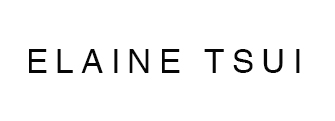A few months ago, Nicole and I submitted a joint competition entry for the Museum of Capitalism and received Honourable Mentions. We have now decided to take the project further and departs from the brief below. Discussions and ideas are welcome.

The Museum of Capitalism offers an alternative architectural typology that brings a brand new perspective on the entangled relationship between critical thinking and the contemporary urban constructs. Located in the heart of the Pearl Delta Estuary, the Museum spans between Hong Kong and Shenzhen, China – highlighting different facets of state capitalism that rises from two political systems. This complex is now officially the largest museum in the world and it invites the audience to contemplate outside the traditional museum typologies with an unorthodox way to approach Capitalism. Today, some museums are branded and have flocked to aspiring port cities, particularly searching for sophisticated visitors on various geopolitical front-lines: the Tate to Liverpool, the Pompidou to Malaga, Guggenheim to Bilbao and Abu Dhabi coupled by the Louvre, and the V&A is heading for Shenzhen. Although most of them are seemingly globalised, their operations are still highly dependent on displays of tangible artefacts to allow the only one-directional flow of information from institutions to the audience without much exchange in return. Unfortunately, this model would no longer work in the 21st century. The public is now in ever high demands for a social learning space for engagements of complex knowledge producing processes – and they deserve it.
The Museum of Capitalism takes lead to a new role in society in mobilising the contemporary public. In order to understand the concept of capitalism, which is about labour, market, states, and the constant shifting relationships that cannot be represented through mere physical forms. This Museum presents an alternative narrative with multiple locations scattered across the bi-city. It is a place where hybrids have emerged – a fantasy of transformation is encountered by the constant clashing of peoples, knowledge and spaces over the past millennium. Instead of expecting another ordinary building designed for static displays, this museum-on-the-move dives into the city to unfold urban scenes leading one to another, for it cannot afford to lose any more opportunities to witness ongoing transitions of geopolitical economics, which are happening right here at centres of the vibrant cities around every corner.
The Museum’s official guided tour begins every day at 9.15am at the Luohu Border Checkpoint, the first land-based civilian border between Hong Kong and China. Itinerary for the day is to be contributed and agreed by all participants before the commencement of the day-trip.
Shenzhen (excerpts from the trip archived on February 15, 2016): Over the top of the Lianhua Mountain in the new political and economic centre of Shenzhen, one can enjoy a panoramic scene of the ever-growing cityscape after an exercising climb.
This new observatory (next week post), designed by Xinyue Zhang, who invites all to monitor the next stage of the experiment of the Special Economic Zone in architectural forms within the urban theatre. Within 20 minutes walking distance, Rem Koolhaas’s Shenzhen Stock Exchange (next week post) represents financial fanaticism in a socialist country; the surrealism of the building shape with 46-storey (254m) fits its surrounding city, which has made its artificiality its identity. Hong Kong (excerpts from the trip archived on February 15, 2016):
As one of the key economies of the Pacific Rim, Hong Kong Island showcases a gleaming landscape of skyscrapers not limited to Cesar Pelli’s International Finance Centre, and Ieoh Ming Pei’s Bank of China, which represent modernity and economic strength. If one was to explore the capitalistic root of Hong Kong, then look no further than the Victoria Harbour (see here). This commodification of land marked subsequent Capitalist exploitations of HK peninsula until today. The highly developed transport infrastructures in HK including the Theory Ride Tram series designed by Elaine Tsui (see here) who has reinvented a traditional tram into an interactive forum often stir heated debates on city development with frequent invited cutting edge specialists.



No Comments